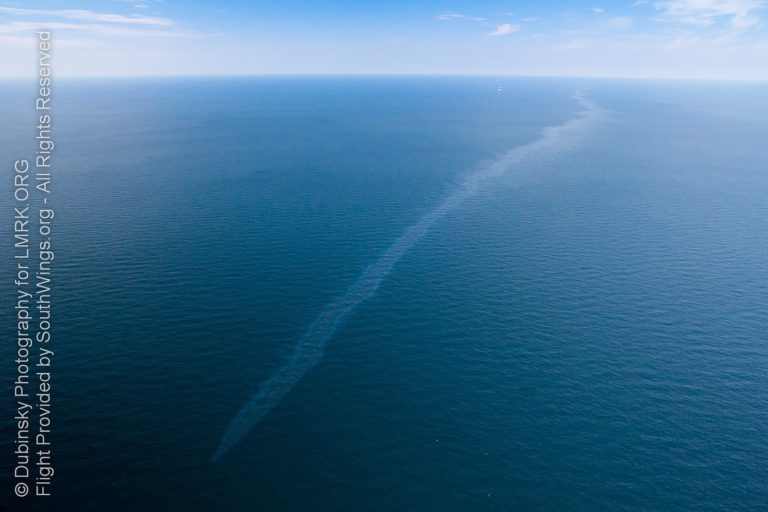
On Thursday, May 12, an estimated 88,000 gallons of oil leaked from a pipeline leading to a Shell platform 97 miles off the coast of Louisiana was detected when a helicopter that happened to be flying overhead saw the sheen. A spill so far off the coast could easily be completely hidden from the view of the public, were it not for the work of groups such as Skytruth, which uses satellite data to track oil spills and response, and On Wings of Care, which was able to take independent researchers on a flyover of the sheen. The resulting reports have raised serious questions about the adequacy and effectiveness of the clean-up effort, and notably, conflicting reports of the amount spilled, with estimates as high as 500,000 gallons.
Even if an oil spill happens 97 miles offshore, there are still serious environmental and human health impacts. Oil spill cleanup technology is still woefully inadequate, usually capturing only a small fraction of the oil. Even when not visibly smothering sea creatures, small amounts of oil can disrupt the reproductive function of many different sea creatures, harming the ecosystem for many years into the future. The use of dispersants in clean-ups often does nothing more than move the oil from the surface into the water column, and dispersants themselves are often toxic chemicals.
Despite these myriad harms, since the spills happen far from the coast, they are often not very visible to the public. That is perhaps why the lawsuit against Taylor Energy – brought by Waterkeeper Alliance, Apalachicola Riverkeeper, and Louisiana Environmental Action Network, with representation provided by the Tulane Environmental Law Clinic – was one of only a few Clean Water Act citizen suits ever brought against an offshore oil leak. This lawsuit was triggered when Waterkeeper Alliance tried to use public information requests to learn about the leak, and found that Taylor Energy was blocking the release of many important documents. As the result of our settlement with Taylor Energy, the company agreed to stop blocking the release of information about the leak and held a forum where Taylor Energy representatives explained the company’s perspective on what should be done to about the leak – which, in their opinion, is to just let it leak.
The federal government is ultimately tasked with deciding whether Taylor Energy may walk away from this ongoing oil leak. Despite calls for greater transparency surrounding their decision-making process and a truly public meeting, the only recent action taken by the federal government was to secretively lower the monitoring requirements for Taylor Energy in December 2015.
The Taylor Energy oil leak comes from wells eleven miles offshore, with a sheen that stretches between 13 -30 miles, but rarely reaches populated part of the coast. This is perhaps why Taylor Energy and the federal government initially thought they did not need to inform or involve the public in this ongoing disaster. Oil has been leaking for over a decade from this site, releasing an estimated 400 to 1000 gallons per day, and the federal government estimates that, if left as is, the leak could continue for at least another 100 years.
By now, the federal government should know that “out of sight, out of mind” will not work when it comes to these offshore oil disasters. The public is well aware of the inherent dangers of offshore oil and gas drilling, and advocacy groups have the resources and dedication needed to make sure these disasters do not go unnoticed. The federal government’s silence on Taylor Energy is particularly suspicious considering that the Obama Administration is currently proposing opening up more areas of the Gulf of Mexico to drilling. If the federal government decides to let Taylor Energy off the hook, that would be an admission that, despite supposed gains in safety, offshore oil drilling is so risky that it creates disasters that both oil companies and the government cannot stop. At the same time, the federal government also seems in no hurry to rebut Taylor Energy’s assertion that an unforeseeable “Act of God” created an unstoppable leak.
It remains to be seen how the government will go forward. However, two things are clear – these offshore disasters cannot be ignored and will not be forgotten, and offshore drilling has no place in a sustainable energy future.